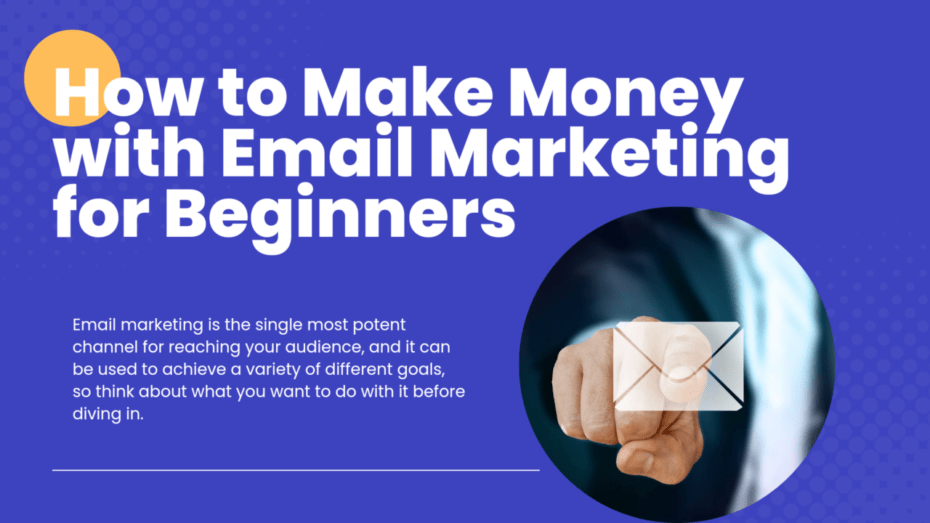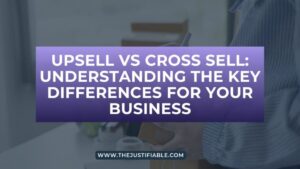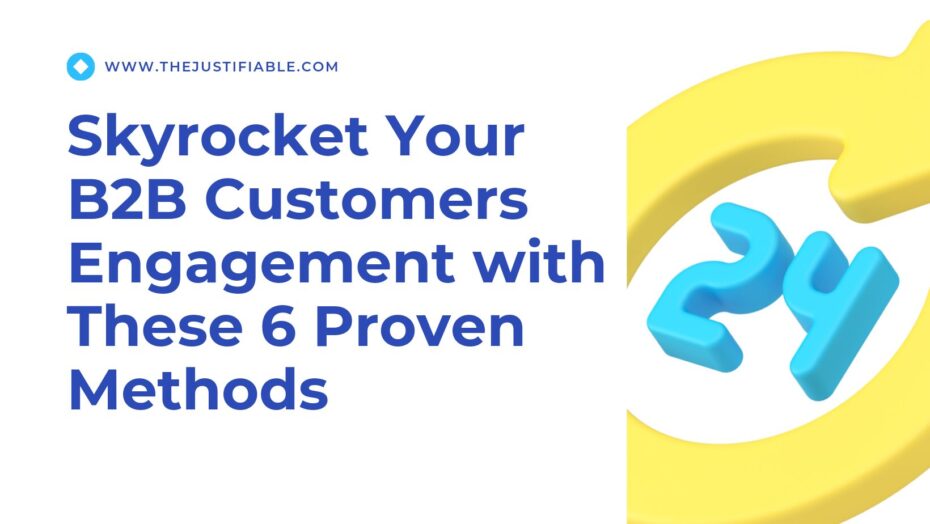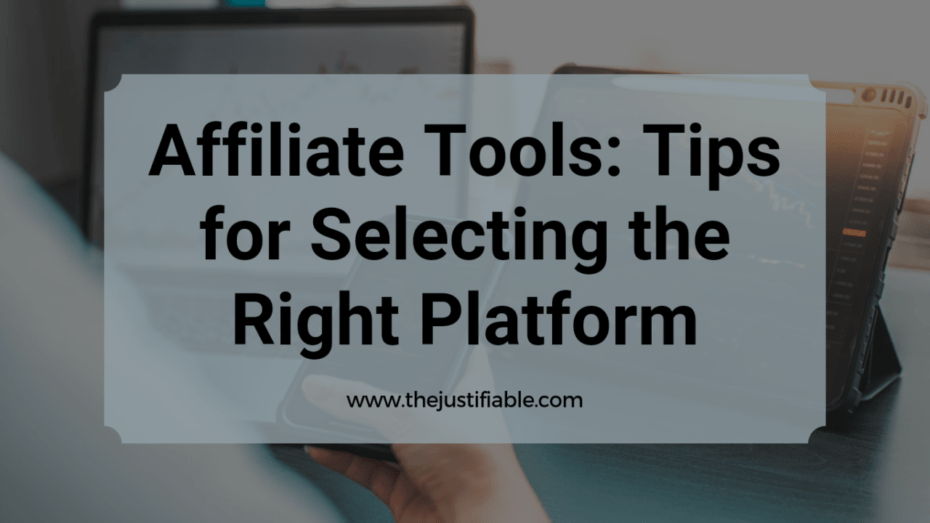Table of Contents
How to make money with email marketing? How can you tap into the vast potential of email marketing to significantly boost your income? What strategies and best practices can beginners employ to make their email marketing campaigns not only successful but also profitable?
In the following content, we’ll dive into the fundamentals of email marketing, showcasing how it can be a pivotal tool in your marketing arsenal, especially for those just starting out.
Email Marketing Recommendations
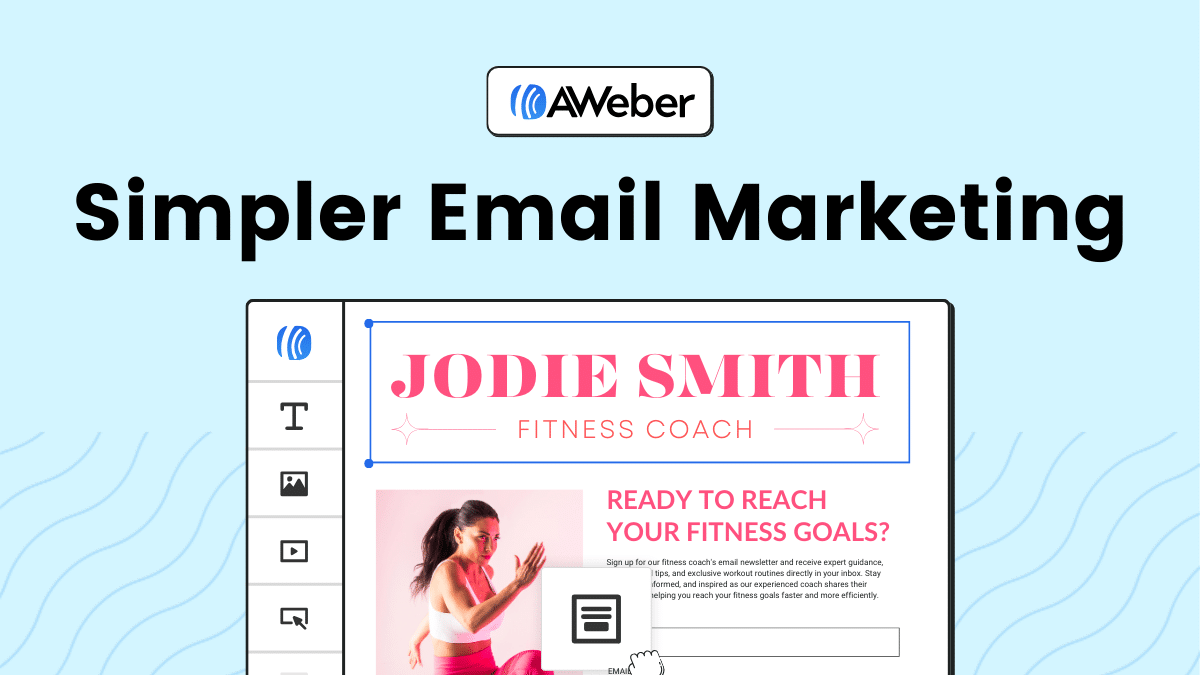 Aweber
| 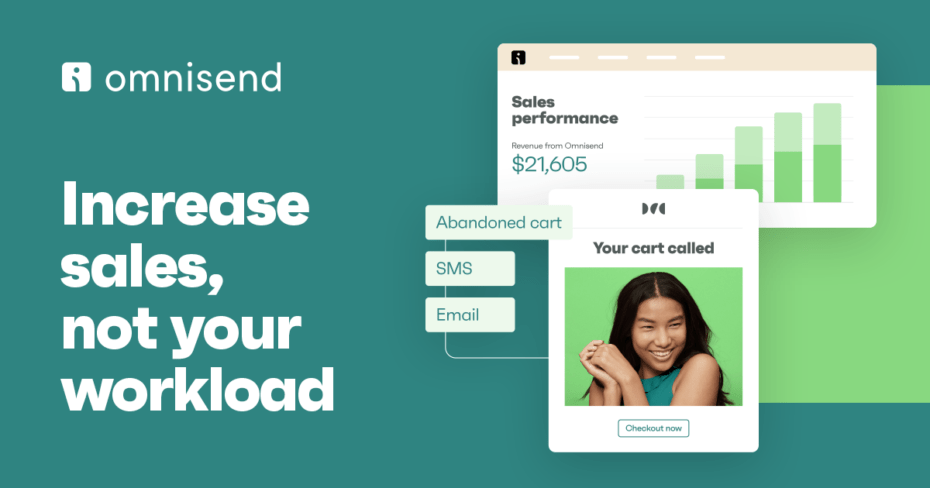 Omnisend
| 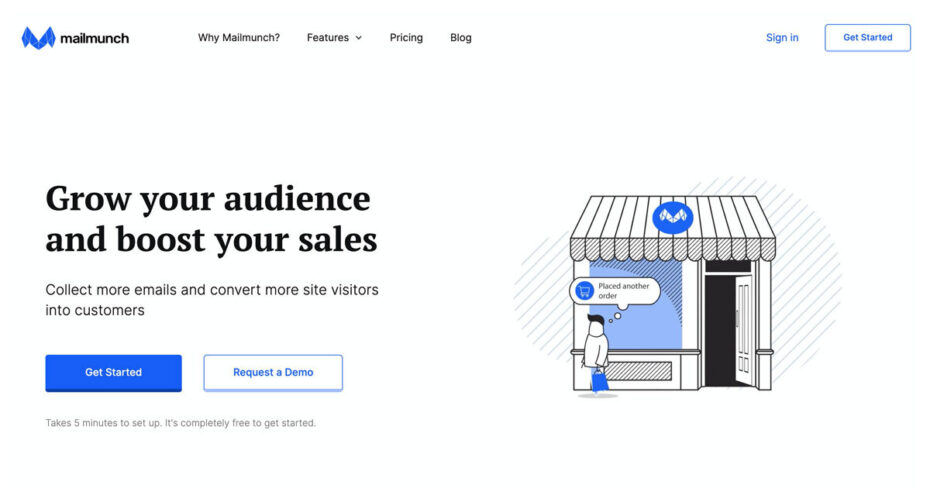 Mailmunch
|
Understanding the Basics of Email Marketing Profits
How can understanding the basics of email marketing turn into significant profits for your business? Email marketing is not just about sending emails; it’s a powerful tool designed to build relationships, drive engagement, and ultimately, increase sales. Most importantly, it offers a remarkable return on investment (ROI) when done correctly, making it a vital component of your digital marketing strategy.
The key to unlocking the potential of email marketing lies in leveraging its capacity to deliver personalized and targeted messages directly to the inbox of your audience. From my perspective, this direct line of communication is invaluable.
It enables you to nurture leads, showcase your expertise, and keep your brand top of mind. According to industry studies, for every $1 spent on email marketing, businesses can expect an average return of $42, which is a testament to its effectiveness.
In my opinion, the beauty of email marketing also lies in its versatility. Whether you’re a small startup or a large enterprise, email marketing scales with your business, offering solutions that can be customized to meet your unique needs and goals.
It’s a channel that supports a wide range of content types—from newsletters and promotional offers to customer surveys and event invitations—each playing a crucial role in your overall marketing ecosystem.
What Is Email Marketing and How Can It Fuel Your Growth?
What exactly is email marketing, and how can it act as a catalyst for your business growth? At its core, email marketing is the practice of sending emails to prospects and customers with the aim of engaging with them directly in their inboxes.
From my perspective, this strategy is not just about promoting your products or services; it’s about creating value that encourages your audience to stay connected with your brand.
I believe that email marketing fuels growth by allowing businesses to maintain continuous, personalized communication with their audience. This ongoing engagement helps to build trust and loyalty, which are crucial for encouraging repeat business and referrals.
Most importantly, email marketing provides invaluable insights into the preferences and behaviors of your audience, enabling you to refine your marketing strategies and offer more of what your customers want.
Moreover, it can significantly enhance your sales funnel efficiency. By segmenting your audience and tailoring your messages to meet the specific needs and interests of different groups, you can increase the relevance and effectiveness of your campaigns.
In my view, this targeted approach not only improves open and click-through rates but also boosts conversion rates, driving more sales and profits for your business.
Key Elements for a Successful Email Campaign Strategy
What are the key elements that constitute a successful email campaign strategy? First and foremost, a clear understanding of your audience is imperative. Knowing who you’re communicating with allows you to craft messages that resonate on a personal level.
I recommend using segmentation to organize your subscribers based on their interests, behaviors, and past interactions with your brand. This ensures that your content is relevant and engaging to each segment.
Another crucial element is the quality of your content. In my estimation, the content of your emails should provide genuine value to your readers, whether it’s informative, entertaining, or offers exclusive deals.
Remember, the goal is to engage your subscribers, not just sell to them. I strongly believe that emails that offer a mix of content types foster better engagement and loyalty among subscribers.
Lastly, continuous optimization is key to a successful email campaign strategy. This involves regularly testing different aspects of your emails, such as subject lines, email layouts, and call-to-action buttons, to see what works best with your audience.
From my experience, analyzing the results of these tests and making data-driven adjustments can lead to significant improvements in your campaign’s performance.
Choosing the Right Email Marketing Platform for Success
Did you know that the average return on investment for email marketing is $42 for every $1 spent? Selecting the right email marketing platform is crucial for tapping into this potential and ensuring your campaigns drive maximum success.
The right platform can help you craft engaging emails, manage your subscriber list efficiently, and analyze the results to continually refine your strategy. It’s not just about sending emails; it’s about creating meaningful connections with your audience, enhancing your brand’s reputation, and ultimately, driving growth and profitability.
The key to choosing the right platform lies in understanding your business needs and goals. Do you require advanced automation features, or is a simple, straightforward service more in line with your current strategy?
Additionally, consider the user interface and ease of use, as these factors will greatly influence your team’s ability to effectively manage campaigns. Most importantly, ensure the platform offers robust analytics and reporting features. These insights are invaluable for making data-driven decisions that optimize your email marketing efforts over time.
Another aspect to consider is the level of customer support provided. In my experience, having access to responsive and knowledgeable support can make a significant difference, especially when navigating the complexities of email marketing.
This support can be a lifeline when you encounter technical issues or need guidance on best practices. My recommendation is to also look for platforms that offer a range of integrations with other tools you use, enhancing the efficiency and effectiveness of your marketing ecosystem.
Aweber: A Comprehensive Tool for Maximizing Engagement
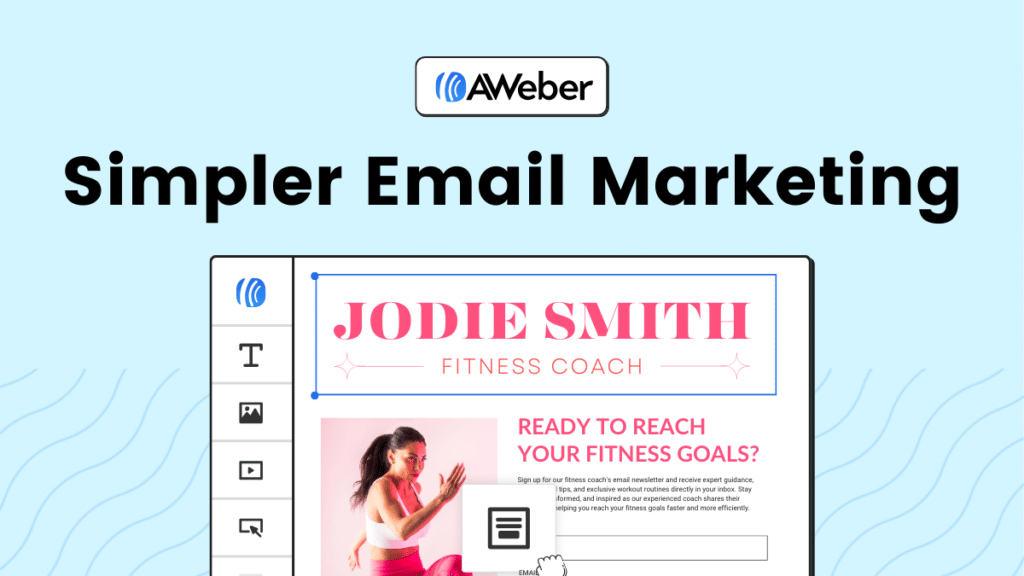
Aweber stands out as a comprehensive email marketing tool designed to maximize engagement with your audience. Its rich set of features includes everything from autoresponders and customizable email templates to advanced analytics.
This makes Aweber an excellent choice for businesses looking to deepen their relationship with subscribers and drive meaningful engagement. According to many users, Aweber’s ease of use and intuitive interface allow for seamless creation and management of email campaigns, even for those new to email marketing.
One of the standout features of Aweber, in my opinion, is its robust automation capabilities. These allow you to trigger emails based on user behavior, ensuring your messages are timely and relevant.
For example, welcome emails for new subscribers, birthday greetings, and follow-ups on abandoned carts can be automated, enhancing the personalized experience for your audience. Moreover, Aweber’s segmentation options enable precise targeting, ensuring your content resonates with different segments of your audience.
Lastly, Aweber’s commitment to deliverability is noteworthy. It works tirelessly to ensure your emails reach your subscribers’ inboxes, bypassing spam filters. This is critical for the success of any email marketing campaign, as even the most compelling content is ineffective if it never reaches its intended audience.
In my estimation, Aweber’s comprehensive toolkit, combined with its excellent deliverability rates, makes it a top choice for businesses aiming to leverage email marketing to its fullest potential.
Omnisend: Unleashing the Power of Automation and Personalization
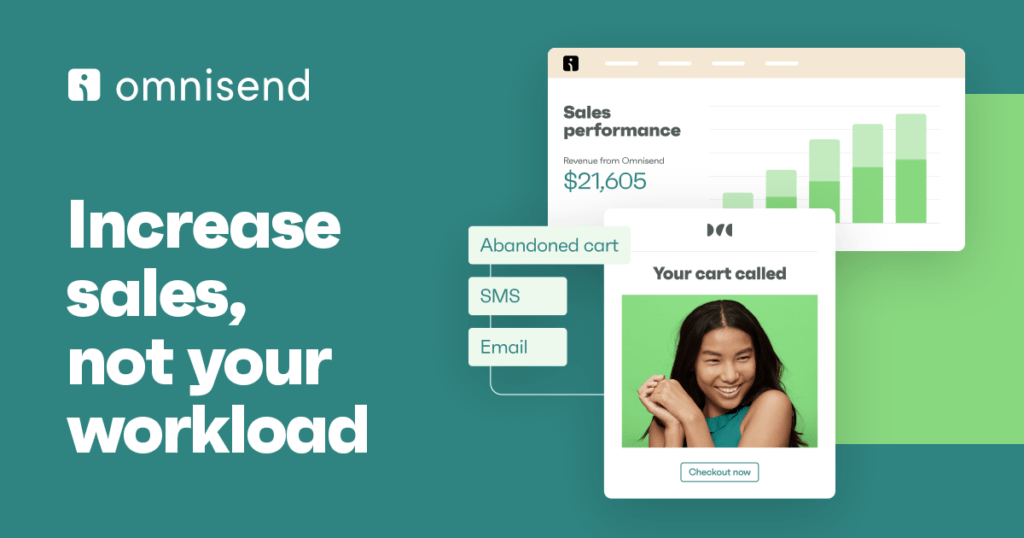
Omnisend is a game-changer for businesses eager to elevate their email marketing through automation and personalization. This platform excels at enabling marketers to send targeted messages that resonate deeply with their audience, enhancing the overall customer experience.
From my perspective, Omnisend’s strength lies in its sophisticated automation workflows that not only save time but also ensure that each subscriber receives content tailored to their interactions and behaviors. This level of personalization is key to building strong, meaningful relationships with your audience.
I recommend Omnisend for its user-friendly interface that simplifies the creation of complex automated sequences. Whether it’s welcoming new subscribers, nurturing leads, or recovering abandoned carts, Omnisend allows you to craft these workflows with ease.
Moreover, its segmentation capabilities are top-notch, enabling you to drill down into your audience data and deliver messages that speak directly to the recipient’s needs and interests. This precision, in my estimation, greatly increases the effectiveness of your campaigns and drives higher engagement rates.
Another aspect where Omnisend shines is in its integration capabilities. The platform seamlessly connects with a wide array of ecommerce tools and platforms, ensuring that your email marketing efforts are fully integrated with your overall sales and marketing strategy.
From my view, this integration is crucial for ecommerce businesses looking to harness the full potential of their data to drive sales through targeted, personalized email marketing campaigns. Omnisend’s comprehensive approach to automation and personalization makes it a powerful ally in converting subscribers into loyal customers.
Mailmunch: Transform Visitors into Loyal Subscribers
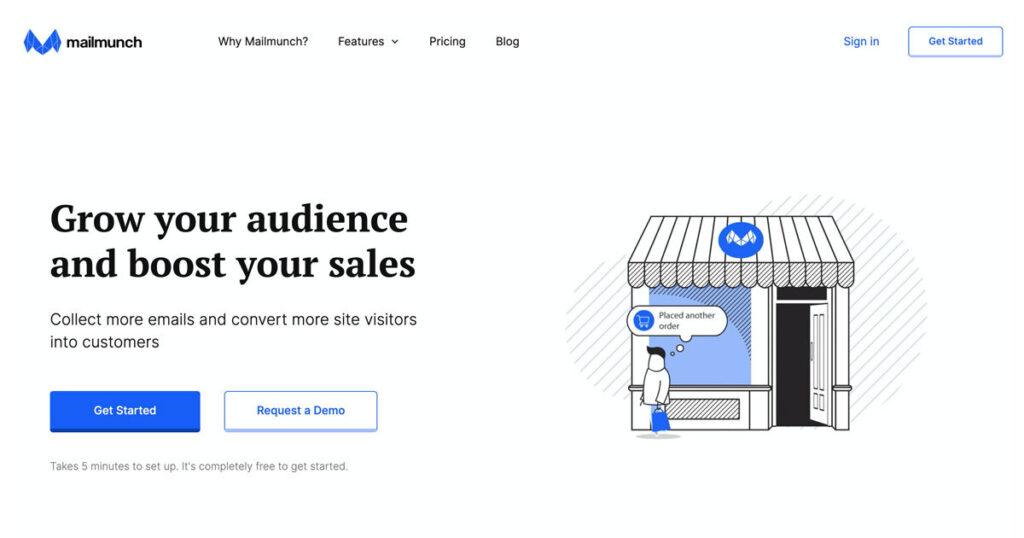
Mailmunch offers a robust suite of tools designed to convert website visitors into subscribers and, ultimately, into loyal customers. It stands out for its focus on lead capture and conversion, providing a variety of forms, pop-ups, and landing pages that are both attractive and effective.
In my experience, Mailmunch’s ability to seamlessly integrate these elements into your website can significantly increase your list growth rate, creating a larger audience for your email marketing campaigns.
One of the key strengths of Mailmunch is its versatility. The platform offers a range of customizable templates that make it easy to create branded forms and pages that resonate with your audience.
This customization capability is critical, in my opinion, for standing out in a crowded digital landscape. By offering compelling incentives and valuable content right from the first point of contact, you can make a strong impression that paves the way for ongoing engagement.
Furthermore, Mailmunch provides insightful analytics that help you understand the effectiveness of your lead capture strategies. By analyzing which forms and pages perform best, you can continuously refine your approach to maximize conversion rates.
My suggestion for businesses looking to enhance their email list growth is to leverage these insights to experiment with different offers, messaging, and design elements. This data-driven approach, coupled with Mailmunch’s comprehensive set of tools, empowers you to effectively transform casual visitors into dedicated subscribers and, eventually, into loyal customers.
Crafting Compelling Emails That Convert
“Email marketing is not about the sender, and the message; it’s about the receiver and what is in it for them.” This quote highlights the essence of creating emails that not only get noticed but also drive action.
Crafting emails that convert is an art and science, blending compelling content with strategic design to guide your audience from interest to action. In today’s digital age, where inboxes are crowded and attention spans are short, the importance of standing out cannot be overstated.
To begin with, understanding your audience is crucial. Knowing their interests, pain points, and desires allows you to tailor your content in a way that resonates personally. This personalized approach increases relevance, fostering a connection that motivates engagement.
Moreover, clarity in your message’s purpose and a clear call to action are fundamental. Each email should have a specific goal, whether it’s driving traffic to a new blog post, promoting a sale, or encouraging feedback. My suggestion is to always keep the end goal in sight and make it as easy as possible for recipients to take the desired action.
Additionally, the timing and frequency of your emails play a significant role in their effectiveness. Bombarding subscribers with too many emails can lead to annoyance and unsubscribes, while too few may cause them to forget about your brand.
Finding the right balance is key, and this often requires testing and adjustment. According to my experience, segmenting your list and tailoring the email cadence to different audience segments can significantly improve engagement and conversion rates.
Writing Irresistible Subject Lines to Boost Open Rates
“The subject line spells the difference between an email that’s opened and one that’s ignored.” This couldn’t be truer in the realm of email marketing. Your subject line is your first (and sometimes only) opportunity to make an impression.
Crafting a subject line that captures attention and piques curiosity is essential for cutting through the noise of a crowded inbox. It should be clear, concise, and compelling, giving recipients a reason to explore further.
In my opinion, the best subject lines often include an element of personalization, urgency, or exclusivity. This could be as simple as incorporating the recipient’s name, hinting at a limited-time offer, or suggesting inside information.
However, it’s crucial to keep promises made in the subject line, as failing to do so can harm trust in your brand. Testing different subject lines is a strategy I highly recommend; it provides insights into what resonates best with your audience, allowing for continual optimization of open rates.
Furthermore, leveraging the power of curiosity can be particularly effective. Subject lines that pose a question or hint at something interesting inside the email can drive higher open rates.
From my perspective, the goal is to evoke enough curiosity that opening the email feels irresistible. But remember, the content inside must deliver on the subject line’s promise, providing value that meets or exceeds expectations.
Designing Emails for Maximum Impact and Click-Throughs
“Good design is good business.” In the context of email marketing, this means creating emails that are not only visually appealing but also strategically structured to guide readers toward taking action. The design of your email plays a critical role in engaging the reader and supporting the content to drive click-throughs. A well-designed email should be clean, easy to navigate, and responsive across all devices.
I strongly believe in the importance of a visually appealing layout that aligns with your brand identity. This consistency helps in building brand recognition and trust. Incorporating elements such as images, GIFs, and videos can also enhance engagement, making the email more interactive and enjoyable to read. However, it’s important to balance creativity with clarity. The main message and call to action should be easy to find and understand.
Moreover, personalization extends beyond the subject line and into the body of the email. Customizing content based on the recipient’s past interactions, preferences, or stage in the customer journey can significantly increase relevance and impact.
My recommendation is to use data insights to inform your design choices, ensuring that each element of the email serves a purpose in guiding the reader towards the desired action.
Advanced Techniques for Maximizing Revenue
Just as a tailor custom-fits a suit to its wearer, so too must email marketers tailor their strategies to fit the diverse needs and interests of their audience. The one-size-fits-all approach is a relic of the past, especially when it comes to maximizing revenue through email marketing.
In the digital age, where data is plentiful and consumer expectations are high, leveraging advanced techniques to personalize your approach can significantly boost your bottom line.
Understanding and implementing advanced segmentation allows you to send highly targeted emails that resonate on a personal level with each segment of your audience. I recommend starting by analyzing your audience’s behavior, preferences, and engagement patterns.
This data can reveal invaluable insights into how best to group your subscribers. By doing so, you’re not just blasting out generic messages; you’re engaging in thoughtful communication that acknowledges the individual behind the email address. This personalized approach is far more likely to drive engagement, loyalty, and ultimately, conversions.
Furthermore, personalization goes beyond just addressing a recipient by their first name. It involves tailoring content, offers, and timing to match the unique needs and interests of each segment.
From my perspective, this can dramatically increase the relevance of your emails, making them more engaging and effective. Most importantly, it shows your subscribers that you understand and value them, which can significantly enhance their perception of your brand and increase their likelihood to purchase.
Segmenting Your List for Personalized Campaigns
Segmentation is the cornerstone of personalized email marketing. Imagine walking into a store and being greeted by name with products tailored to your exact preferences displayed just for you.
That’s the level of personalization and attention to detail segmentation can bring to your email campaigns. By dividing your audience into specific groups based on criteria like demographics, purchase history, and engagement level, you can craft messages that speak directly to their interests and needs.
In my opinion, effective segmentation begins with data collection and analysis. Understanding the nuances of your audience’s behavior and preferences enables you to create segments that are both meaningful and actionable.
For instance, segmenting by engagement level allows you to re-engage inactive subscribers with special offers or content designed to reignite their interest. Meanwhile, frequent purchasers might receive VIP treatment with exclusive previews or discounts, reinforcing their loyalty.
Moreover, segmentation isn’t a set-it-and-forget-it task; it’s an ongoing process that evolves as your audience and business grow. My suggestion is to regularly review and refine your segments based on the latest data and insights.
This dynamic approach ensures your campaigns remain relevant and effective, maximizing the potential for revenue growth. It’s a strategy that not only enhances the customer experience but also drives more targeted and efficient marketing efforts.
A/B Testing: Refining Your Strategy for Higher Profits
A/B testing, also known as split testing, is akin to conducting a science experiment on your email campaigns. By comparing two versions of an email to see which one performs better, you can make data-driven decisions that refine your strategy and enhance your profitability.
This methodical approach allows you to test everything from subject lines and email content to send times and call-to-action buttons, eliminating guesswork and optimizing based on actual results.
I believe that the key to successful A/B testing lies in its simplicity: change one variable at a time to accurately measure its impact. This might seem like a slow process, but it’s incredibly effective in understanding what resonates with your audience.
Whether it’s tweaking a subject line to increase open rates or adjusting the design of a call-to-action to boost click-through rates, the insights gained from A/B testing are invaluable.
Most importantly, A/B testing fosters a culture of continuous improvement. It’s not about one-off changes but about constantly iterating and optimizing your email marketing efforts. My recommendation is to make A/B testing a regular part of your email marketing strategy.
By doing so, you’ll not only refine your approach for higher profits but also stay ahead of the evolving preferences of your audience. In my estimation, A/B testing is one of the most powerful tools in an email marketer’s arsenal for driving revenue growth and enhancing the effectiveness of their campaigns.
Tracking and Analyzing Your Email Marketing Success
While creativity and intuition play significant roles in crafting email campaigns, the true marker of success lies in the data. Acknowledging this fact shifts the focus from guesswork to precision, enabling a more strategic approach to email marketing.
The ability to track and analyze the performance of your campaigns not only illuminates what’s working and what isn’t but also provides insights for continual improvement. In a landscape as competitive as email marketing, understanding the nuances of your campaigns’ performance is not just beneficial; it’s essential.
To begin with, identifying and monitoring the right metrics is crucial for assessing the health and effectiveness of your email campaigns. Open rates, click-through rates (CTR), conversion rates, and bounce rates are just the starting point. These metrics offer a snapshot of engagement and interaction with your emails.
However, digging deeper, metrics like email forwarding rate and list growth rate can offer insights into how your content resonates with your audience on a broader scale. In my opinion, paying attention to these metrics can help you refine your content strategy and improve the overall health of your email list.
Furthermore, it’s important to recognize that these metrics are not just numbers; they are indicators of user behavior and preferences. Analyzing trends over time can reveal patterns that inform not only your email strategy but your broader marketing efforts.
For instance, if certain types of content consistently yield higher engagement rates, this can guide your content creation across all channels. Similarly, understanding the types of offers or calls-to-action that drive conversions can inform your sales strategy. In my view, this holistic approach to analysis is what transforms good marketers into great ones.
Essential Metrics to Measure Your Email Campaign’s Performance
Measuring the success of email campaigns hinges on your understanding of essential metrics. Open rate, for instance, tells you how many people are interested enough in your subject line to open your email, while click-through rate (CTR) measures how compelling your email content is in encouraging readers to click on links within the email.
Conversion rate, on the other hand, reveals the effectiveness of your email in convincing subscribers to take a desired action, such as making a purchase or signing up for a webinar. These metrics are fundamental to gauging the immediate impact of your emails.
Bounce rates and unsubscribe rates are equally important, as they provide insight into the health of your email list and the relevance of your content. A high bounce rate might indicate outdated email addresses or issues with your email’s deliverability, while a rising unsubscribe rate could signal a disconnect between subscriber expectations and the content you’re delivering.
In my experience, closely monitoring these metrics can help you maintain a clean, engaged email list, which is a critical component of email marketing success.
Moreover, the engagement over time metric is invaluable for understanding how your audience interacts with your emails throughout a campaign. This metric can highlight the best times to send emails and identify when engagement starts to wane, indicating it might be time to refresh your content or offer.
From my perspective, keeping a close eye on these essential metrics allows you to create more targeted, effective email marketing campaigns that resonate with your audience and drive results.
Leveraging Analytics to Optimize Your Email Marketing Strategy
Leveraging analytics goes beyond merely collecting data; it’s about making informed decisions that enhance your email marketing strategy. By analyzing the performance of past campaigns, you can identify trends and patterns that inform future strategies.
This could mean adjusting your email send times based on when your audience is most active or tailoring your content to match the preferences shown in your engagement metrics. Most importantly, analytics can help you understand the customer journey, from initial contact to conversion, allowing you to craft emails that nurture leads effectively at every stage.
Personalization and segmentation are powerful strategies that can be refined with analytics. For instance, by analyzing click-through data, you can understand which types of content or offers are most appealing to different segments of your audience.
This enables you to tailor your campaigns more precisely, potentially boosting engagement and conversion rates. In my estimation, the more targeted your emails, the higher the likelihood of resonating with your audience, making analytics an invaluable tool for segmentation and personalization.
Finally, continuous A/B testing, informed by analytics, allows you to optimize every aspect of your email marketing. By systematically testing different elements of your emails, from subject lines to call-to-action buttons, you can gradually improve your campaign’s performance based on empirical evidence.
This iterative process, in my view, is crucial for staying competitive and keeping your email marketing strategy aligned with your audience’s evolving preferences. Leveraging analytics is not just about understanding where you’ve been; it’s about charting a course for where you’re going, ensuring your email marketing strategy remains dynamic and effective.
Avoiding Common Pitfalls in Email Marketing
It might come as a surprise to learn that even the most seasoned marketers can fall into common traps within their email marketing campaigns, significantly affecting their overall success.
These pitfalls, ranging from disregarding list segmentation to neglecting the optimization of email for mobile devices, can derail your efforts to reach and engage your audience effectively. However, the good news is that with the right knowledge and approach, these common mistakes are easily avoidable, ensuring your email marketing strategy is both robust and effective.
One critical aspect of avoiding pitfalls in email marketing is understanding the importance of content relevance and personalization. Generic, one-size-fits-all messages are likely to disengage your audience, leading to higher unsubscribe rates and lower engagement.
I recommend adopting a customer-centric approach, tailoring your emails to meet the interests and needs of your audience segments. This strategy not only enhances the recipient’s experience but also significantly boosts your email engagement rates.
Additionally, paying attention to the frequency and timing of your emails is essential. Bombarding subscribers with too many emails can be just as damaging as sending too few. Finding the right balance is key, and this often requires testing and learning from your audience’s behavior.
According to my experience, maintaining a consistent yet considerate email schedule respects your subscribers’ inboxes while keeping your brand top of mind. It’s a delicate balance that, when struck, can lead to long-term engagement and loyalty.
Steering Clear of Spam Filters: Best Practices for Email Marketers
Navigating the maze of spam filters is a challenge for any email marketer, but it’s crucial for ensuring your messages reach your audience’s inboxes. Surprisingly, simple mistakes like using all caps in your subject line or excessive use of sales-oriented words like “free” or “buy now” can trigger spam filters, relegating your carefully crafted messages to the spam folder. Implementing best practices is essential for avoiding these filters and maintaining the integrity of your email marketing efforts.
Firstly, obtaining explicit consent from recipients before sending emails establishes a foundation of trust and compliance. This not only aligns with legal requirements but also improves your email deliverability.
I suggest using a double opt-in method, which further verifies the subscriber’s interest in your content, significantly reducing the likelihood of being marked as spam. Moreover, regularly cleaning your email list of inactive subscribers can improve your sender reputation, a crucial factor in bypassing spam filters.
Another effective strategy is to personalize the email’s content, including using the recipient’s name and tailoring the message to their interests. This approach demonstrates to email service providers that your content is relevant and engaging to the reader, thereby reducing the risk of being flagged as spam.
From my perspective, paying attention to the technical aspects of email marketing, such as authenticating your email domain and avoiding blacklisted terms, is also critical. These steps, combined with a focus on creating high-quality, engaging content, can significantly minimize the chances of your emails being caught by spam filters.
Building a Healthy Email List for Long-Term Success
The foundation of any successful email marketing campaign is a healthy, engaged email list. Surprisingly, the temptation to rapidly increase list size can lead to practices that harm more than help, such as purchasing email lists or adding people without their consent.
These approaches might offer short-term gains but can damage your reputation and deliverability in the long run. A more sustainable strategy focuses on organic growth, ensuring subscribers are genuinely interested in your brand and more likely to engage with your content.
To build a healthy list, I recommend focusing on creating valuable content and offers that incentivize potential subscribers to join your list willingly. This could include exclusive content, access to special deals, or informative newsletters. Providing clear value encourages sign-ups and fosters a sense of anticipation for your emails.
Additionally, ensuring an easy and accessible unsubscribe process paradoxically helps maintain list health by allowing disinterested parties to opt-out, leaving a more engaged audience behind.
Finally, regular maintenance of your email list is crucial. This involves removing inactive subscribers who haven’t engaged with your emails over a significant period.
My suggestion is to periodically send re-engagement campaigns targeted at these subscribers before removing them, as this can reignite interest in some cases. From my perspective, a smaller, more engaged email list is far more valuable than a large but disinterested one.
Propel Your Online Income with Strategic Email Marketing
In the realm of digital marketing, strategic email marketing stands out as a powerful tool capable of propelling your online income to new heights. It’s an essential component of a holistic marketing strategy, enabling businesses to communicate directly with their audience in a personalized manner.
Most importantly, when done correctly, email marketing can significantly boost engagement, conversion rates, and ultimately, revenue. It’s about understanding your audience, delivering value, and building relationships that transcend the transactional.
To truly harness the power of email marketing, I suggest adopting a customer-centric approach. Focus on crafting content that resonates with your subscribers, addressing their needs, and providing solutions to their problems.
Personalization is key here; by tailoring your emails to the interests and behaviors of your audience, you can increase relevancy and engagement. According to my experience, an engaged subscriber is more likely to convert into a paying customer. Therefore, investing time in segmenting your list and customizing your messages can pay dividends in the long run.
Furthermore, continuous optimization of your email marketing strategy is essential for long-term success. This involves regularly analyzing your campaigns’ performance, conducting A/B tests, and refining your approach based on data-driven insights.
From my perspective, the beauty of email marketing lies in its flexibility and measurability. By leveraging analytics to understand what works and what doesn’t, you can make informed decisions that enhance your strategy and drive higher returns. In my estimation, those who embrace the nuances of strategic email marketing and commit to ongoing improvement are the ones who will see the most significant impact on their online income.


